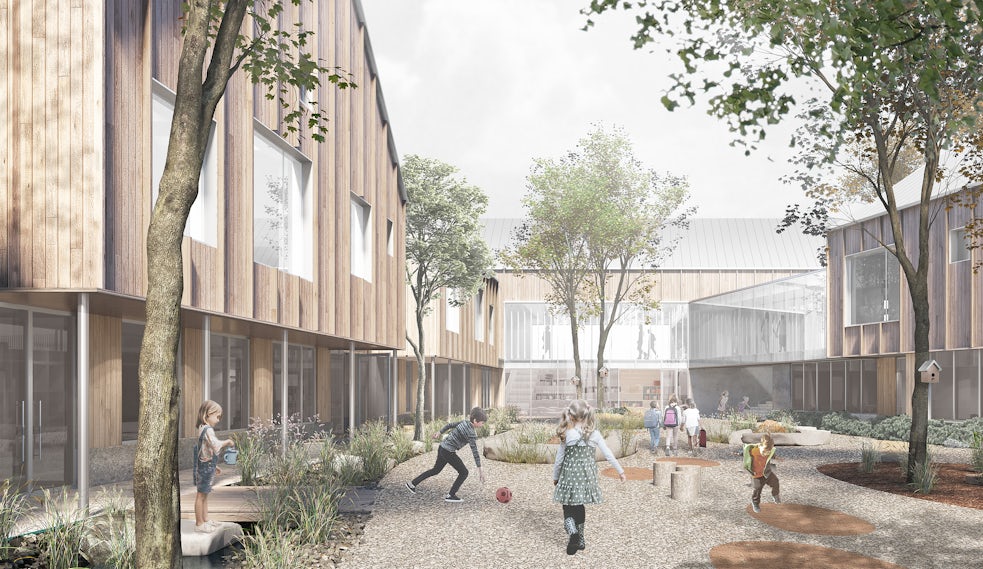Architizer is thrilled to reveal the 12th Annual A+Awards Finalists. See which projects and firms made the cut and have your say in who wins a coveted Popular Choice A+Award. Cast your vote today >
Architectural and urban enthusiasts may be familiar with Ebenezer Howard’s Garden Cities of To-morrow, which proposed urban solutions to social issues that emerged with the industrial revolution. His self-sufficient satellite cities — independent social centers that are a far cry from today’s concept of the suburbs — were cushioned by greenbelts that wrap around larger urban centers. His ideas were one more link in a long line of socially-oriented urban thought, from Claude-Nicolas Ledoux’s City of Chaux to Tony Garnier’s Cité Industrielle.
The counterpart to these paper ideas were real company towns founded by industrialists and aimed at improving the lives of their workers, who faced unsanitary conditions in overcrowded cities. British towns such as Saltaire may immediately come to mind, as well as other 19th-century examples in Catalonia. However, many Canadians may be surprised to learn that the progeny of these ideas can also be found on home soil in a little village located 175 km east of Toronto on the Trent River.

Batawa (the Bata village in Canada) was originally established in late 1939. sludgegulper, Batawa bata, CC BY-SA 2.0
Founded in 1939, the story of Batawa is a fascinating journey of a small town whose trajectory dovetails with larger global events in 20th century Western history. It all started with Thomas J. Bata, whose father (with the same name) had built the Bata shoe empire out of Zíln, small town near the Eastern border of their native country, Czechoslovakia, whose growth had coincided with their shoe company’s growth.
While it may not have been designed with the intention of becoming a company town, Zíln’s main industry quickly became tied to Bata manufacturing, and the town’s population grew by thousands. Tomas Bata Sr. himself was elected as mayor of the burgeoning garden city in 1923. Zíln swelled as a collection of functionalist buildings and facilities were erected around its outskirts. Far from uncontrolled growth, the flats, schools, department stores, scientific facilities and hospital were all carefully laid out according to modernist principals.

A photograph of a Batawa, Ontario baseball team by Community Archives
Yet, the decade of the 30s was marked by tragedy: the death of Tomas Bata Sr. in an plane crash and the shadow of Nazi Germany growing darker by the day. Just before Hitler’s soldiers crossed the border, Bata’s son, also named Thomas, packed up his things and made his way across the Atlantic. Once in Canada, the young Bata zeroed in on a plot near the Trenton river, in the pasturelands between Toronto and Ottawa, and then convinced authorities to process 100 company employees from Czechoslovakia. So began the Canadian branch of the global Bata empire.
Within the first year, the Bata employees had constructed the epicenter of their new town: the five-story Bata Shoe Factory, which was surrounded by a growing number of modest homes that workers could rent for just $10 a day. As the town expanded, new streets were added whose names were not in the founder’s native Czech, but instead reflected the company’s embrace of its adopted home: Fraser, Sidney, Bishop and King George. The community soon counted two schools, two churches, a bank, a post office and sports facilities — including a small ski hill. It was a rural town built by employees and inhabited by those same workers.
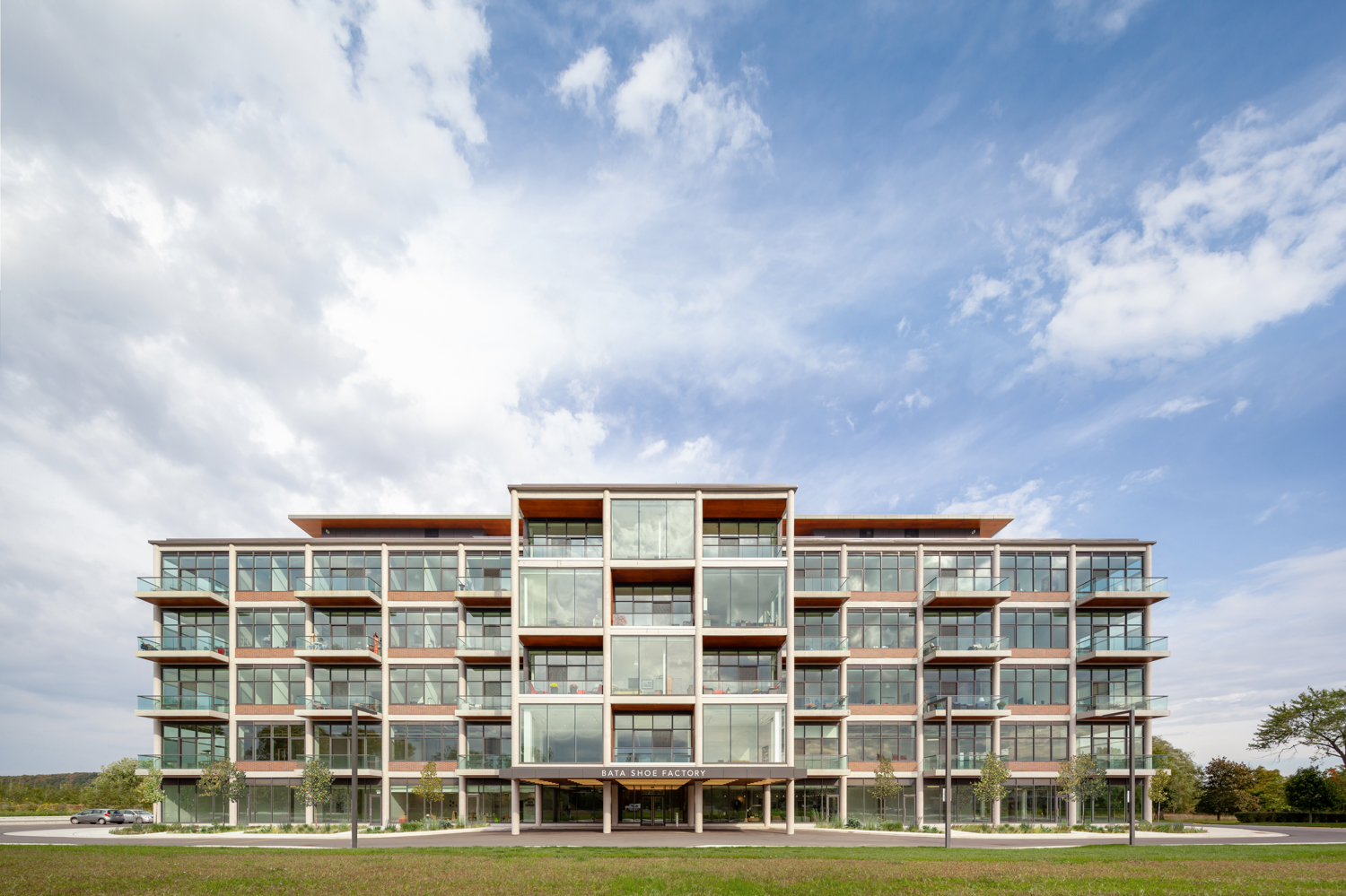
Bata Shoe Factory by BDP Quadrangle and Dubbeldam Architecture + Design, Batawa, Canada | Jury Winner, 10th Annual A+Awards, Architecture +Stairs
The shoe factory would go on to employ nearly 2, 000 people and for fifty years Batawa was the headquarters of the world’s largest shoe manufacturer. During this period, the company would produce more than 142 million shoes. However, with globalization, the Canadian manufacturer would struggle to produce their product at a competitive rate, and Batawa’s Bata Shoe Factory was decommissioned in the year 2000 and sold to a plastics company. What would happen to the company town that was socially and economically dependent on the factory?
Eight years later, Batawa’s fortune changed once again when Sonja Bata, the wife of the late founder, purchased the entire 1,500-acre site, with a vision of reinventing the town as a model of sustainable development. The first order of business was an ambitious adaptive re-use project. Enter Dubbeldam Architecture + Design and BDP Quadrangle, two of Canada’s top architecture offices, who were charged with converting the former factory into a mixed-use residential and commercial hub with a light environmental footprint and a strong social mandate. The project consciously sought to offer an affordable rental model rather than condominium units.
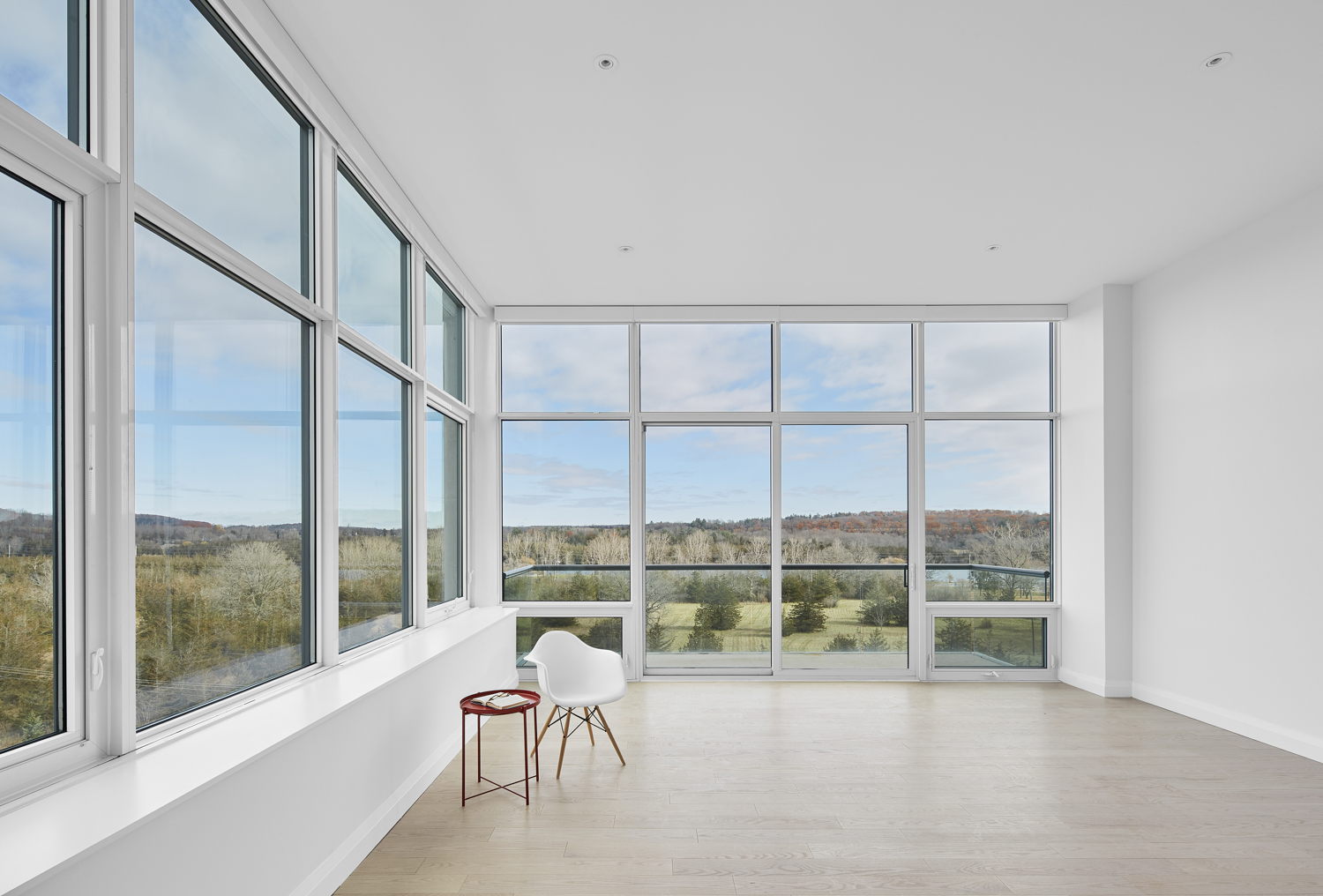
Bata Shoe Factory by BDP Quadrangle and Dubbeldam Architecture + Design, Batawa, Canada | Jury Winner, 10th Annual A+Awards, Architecture +Stairs
Notably, all project and design decisions engaged with the town’s founding urban principals. If the factory had been a social incubator in the 20th century — more simply put, the town’s raison d’être — how could it be adapted to perform similar social functions in the economy of the 21st century? For the designers, the answer was multi-pronged. The building would need to remain a community hub, as it had during the Bata years. To do this, it would need to offer amenities to both residents and the community-at-large.
The adaptive reuse project hence sought to create space for local businesses on the ground floor, while allocating portions of the second floor to a daycare with an outdoor playground, as well as exhibition/community space and multi-purpose rooms for meetings and lectures. The rest of the factor was transformed into 47 high-quality rental units of varying sizes with the aim of promoting aging-in-place for residence who want to stay connected with the community. Finally, a rooftop terrace with panoramic views to the local Batawa ski hills and the Trent River was added, making a visual connection to the rest of the community. High speed internet ensures that the building is attractive to residents with remote or hybrid jobs.

Bata Shoe Factory by BDP Quadrangle and Dubbeldam Architecture + Design, Batawa, Canada | Jury Winner, 10th Annual A+Awards, Architecture +Stairs
At their heart, the concept of a company town is utopian: the urban concept was born by industrialists who sought to build better lives for employees. Now, in the 21st century, the social mandate of Batawa has evolved to one that promotes sustainable construction, building and lifestyles. For example, by retaining the original 1939 concrete structure, the firms saved close to 80% of the embodied carbon from the original building. The adaptive reuse project also involved integrating sustainable energy systems throughout. Now, the building’s heating and cooling are powered entirely through a geothermal energy source (comprised of 63 holes drilled deep beneath the parking area).
Passive strategies were also adapted, including an airtight building envelope and operable windows. When new materials were required, they were specified to be as sustainable as possible: long lifespans, durability and eco-friendly characteristics were taken into account. This is evident throughout the design and exemplified by the carpet tiles which were made with recycled fishing nets and low VOC finishes.
“This project is a model for environmental and social sustainability and increased housing density in a rural setting with the lightest impact on the environment,” said Dubbeldam Architecture + Design’s principal Heather Dubbeldam. She adds, “The renovated factory now stands to once again become a beacon within the town, focused on a sustainable future.”
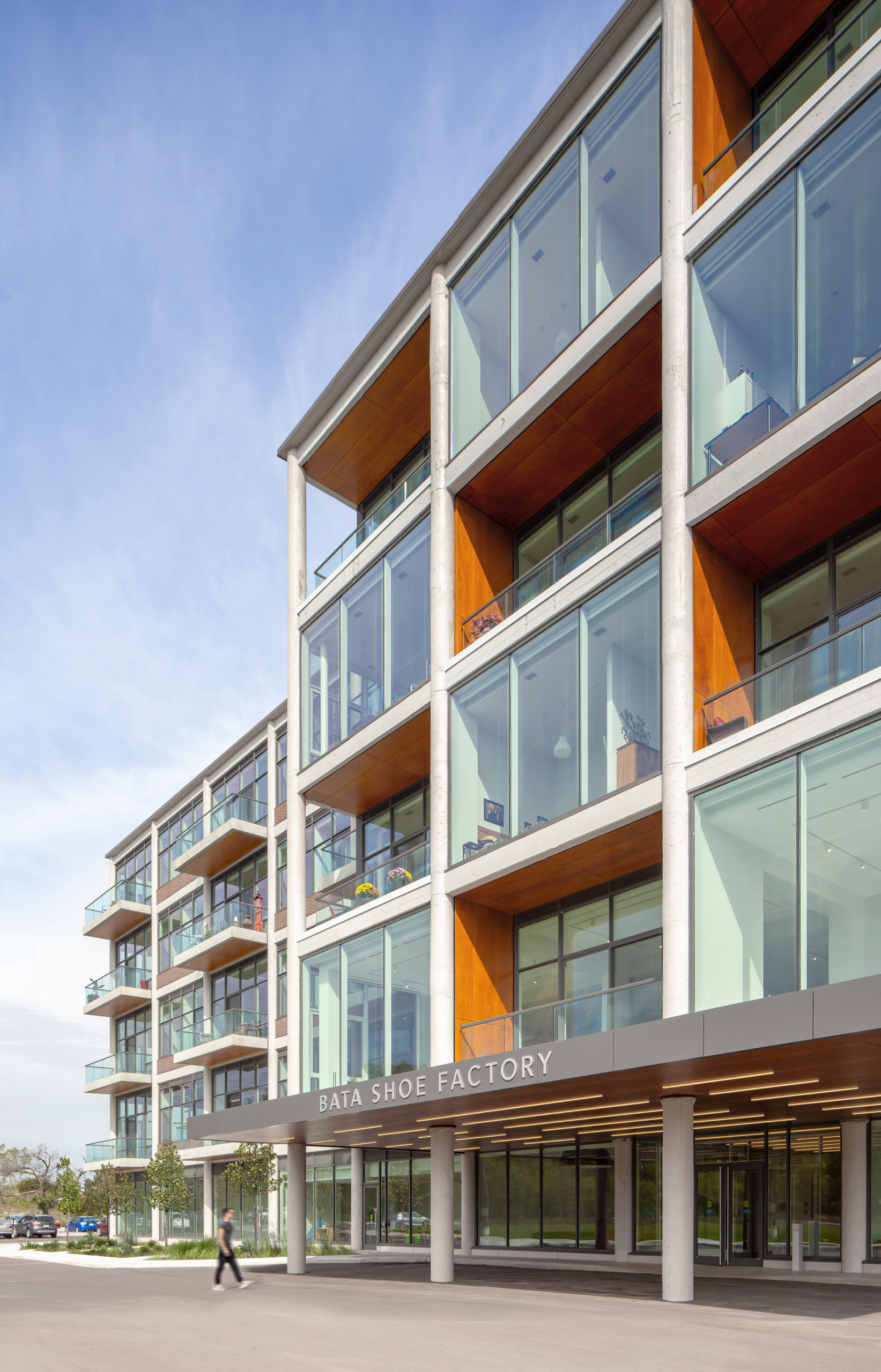
Bata Shoe Factory by BDP Quadrangle and Dubbeldam Architecture + Design, Batawa, Canada | Jury Winner, 10th Annual A+Awards, Architecture +Stairs
Notably, these gains were not achieved entirely at the expense of the building’s Modernist heritage. Remember, Bata oversaw the construction of this factory when he had only recently relocated from Zíln, and it is evident that the memories of the modernist buildings remained on forefront of his mind as he designed the new headquarters for his empire. This is best exemplified by the original waffle slab structure who soaring open spans that once opened up the factory floor to a flood of natural light, now give way to 12-foot-high ceilings in the residential units.
Meanwhile, the subtle use of new materials and design elements also make the building feel less industrial — while the modernist aesthetic may be pleasing to design enthusiasts, not all of the details translate well to the homey feeling required of a residential building. For example, while the new façade features is glazed and clad with materials that evoke the factory’s original appearance, the addition of cantilevered balconies, although not original to the factory, certainly enhance the lives of those who now live there. Likewise, the wood cladding on soffits and balcony walls soften the industrial aesethetic, making it feel a little less sanitary than the building did in a past life. Finally, the faceted sculptural steel staircase in the heart of the two-story lobby wraps around an exposed concrete column, highlighting and showcasing a vital element of the original factory structure.
With globalization and today’s technology, the future of industrial towns is indeed uncertain. Projects like Batawa demonstrate that there is more at stake in adaptive reuse than just architectural renovation. By reimagining 20th century typologies for the 21st century — more and more, industrial architecture — architects can create symbolically meaningful and functional spaces that continue the legacy of their past life while contributing to brighter and different future.
Architizer is thrilled to reveal the 12th Annual A+Awards Finalists. See which projects and firms made the cut and have your say in who wins a coveted Popular Choice A+Award. Cast your vote today >
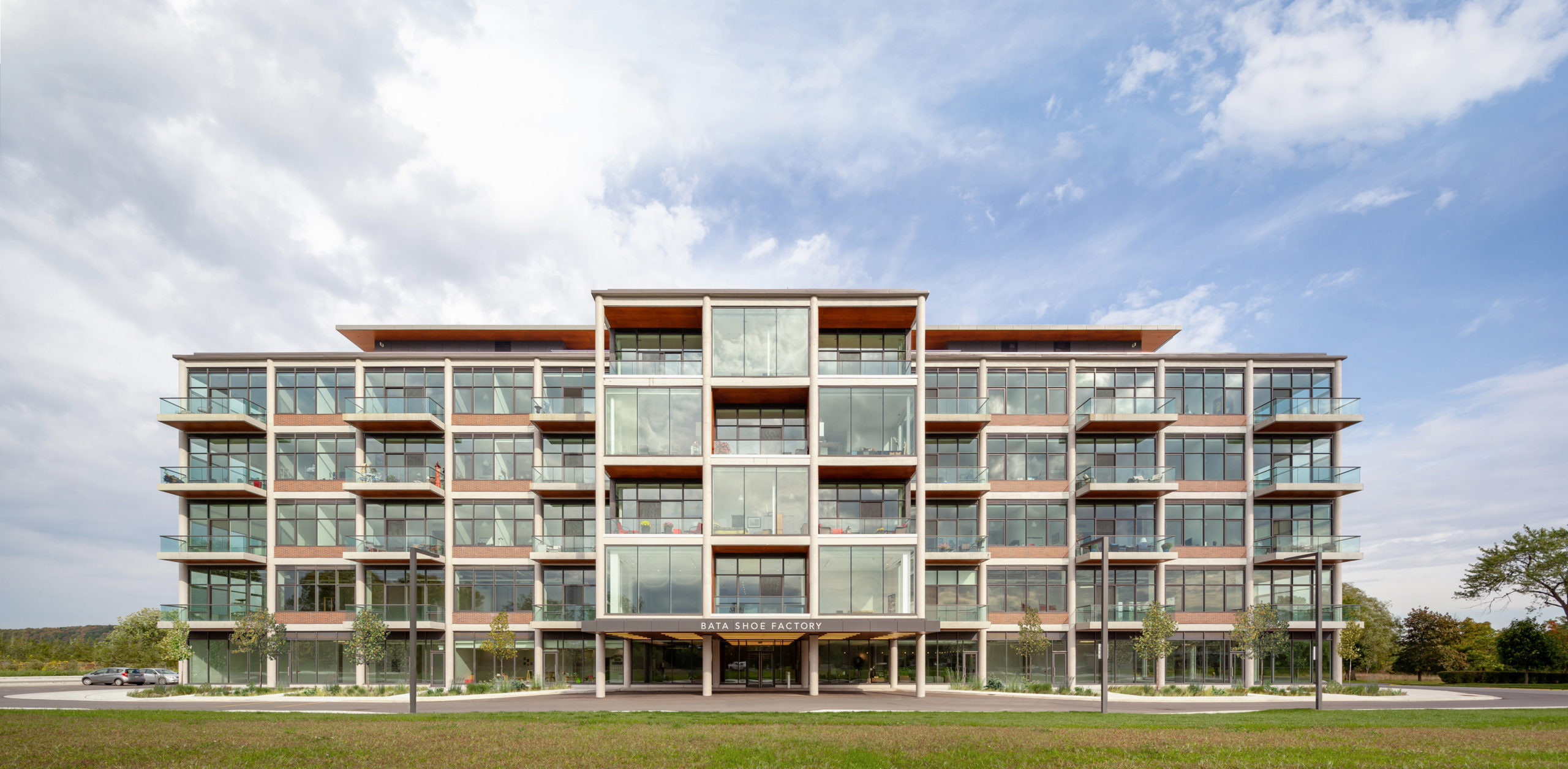





 Bata Shoe Factory
Bata Shoe Factory 
